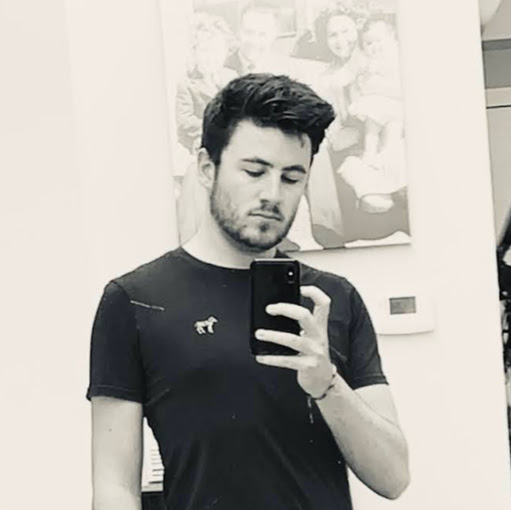Robert F Bridge
age ~74
from Dripping Springs, TX
- Also known as:
-
- Robert Farquhar Bridge
- Bob F Bridge
- Bob L Bridge
- Rob Bridge
- Bobby Bridge
- Richard Bridge
- Roger Bridge
- Roy Bridge
Robert Bridge Phones & Addresses
- Dripping Springs, TX
- 1801 Glencliff Dr, Austin, TX 78704 • (512)4452919
- Wheaton, IL
- Jacksonville, FL
- Blairsville, PA
- Denver, CO
- Houston, TX
- Hays, TX
Work
-
Company:Cnc federal a service disabled veteran-owned small business2010
-
Position:As an outside sales account executive selling to gsa
Education
-
School / High School:Georgia Tech- Atlanta, GAJan 1970
-
Specialities:BSIM in Business
Ranks
-
Licence:Illinois - Active And Authorized To Practice Law
-
Date:1996
Lawyers & Attorneys

Robert Dickson Bridge, Chicago IL - Lawyer
view sourceAddress:
True Value Company
8600 W Bryn Mawr Ave, Chicago, IL 60631
(773)6955451 (Office)
8600 W Bryn Mawr Ave, Chicago, IL 60631
(773)6955451 (Office)
Licenses:
Illinois - Active And Authorized To Practice Law 1996
License Records
Robert A Bridge
License #:
54.78.1301 - Active
Issued Date:
Feb 22, 2006
Expiration Date:
Jan 2, 2018
Type:
Fire Protection Individual
License #:
54.78.1301/1 - Active
Category:
Fire Alarms/Detection
Issued Date:
Jan 3, 2006
Name / Title
Company / Classification
Phones & Addresses
DIRECTOR
INVIEW TECHNOLOGY CORPORATION
6201 E Oltorf St STE 400, Austin, TX 78741
1801 Glencliff Dr, Austin, TX 78704
610 Cottonwood Crk, Dripping Springs, TX 78620
1801 Glencliff Dr, Austin, TX 78704
610 Cottonwood Crk, Dripping Springs, TX 78620
CFB MARYSVILLE FOODS, LLC
Director
FLOW ENGINES INC
7600B Capital Of Tx Hwy STE 200, Austin, TX 78731
Manager
KCB COMPANY LLC
Director
Flow Engines, Inc
300 W 6 St, Austin, TX 78701
President, Director
Bridge & Assoc., Inc
38 Jackson Ave, Ponte Vedra, FL 32082
CEO, Director
Zilker Labs LLC
Semiconductors and Related Devices
Semiconductors and Related Devices
1001 Murphy Rnch Rd, Milpitas, CA 95035
4301 Westbank Dr, Austin, TX 78746
(512)3068680
4301 Westbank Dr, Austin, TX 78746
(512)3068680
Us Patents
-
Determining Light Level Variation In Compressive Imaging By Injecting Calibration Patterns Into Pattern Sequence
view source -
US Patent:8570405, Oct 29, 2013
-
Filed:Jul 28, 2011
-
Appl. No.:13/193553
-
Inventors:Kevin F. Kelly - Houston TX, US
Richard G. Baraniuk - Houston TX, US
Leonore McMackin - Austin TX, US
Robert F. Bridge - Austin TX, US
Sujoy Chatterjee - Austin TX, US
Donna E. Hewitt - Austin TX, US
Tyler H. Weston - Austin TX, US -
Assignee:InView Technology Corporation - Austin TX
-
International Classification:H04N 5/217
H04N 5/228
H04N 7/12
H03M 1/00
H03M 1/78 -
US Classification:348241, 3482221, 341123, 341155
-
Abstract:An imaging system and method that captures compressive sensing (CS) measurements of a received light stream, and also obtains samples of background light level (BGLL). The BGLL samples may be used to compensate the CS measurements for variations in the BGLL. The system includes: a light modulator to spatially modulate the received light stream with spatial patterns, and a lens to concentrate the modulated light stream onto a light detector. The samples of BGLL may be obtained in various ways: (a) injecting calibration patterns among the spatial patterns; (b) measuring complementary light reflected by digital micromirrors onto a secondary output path; (c) separating and measuring a portion of light from the optical input path; (d) low-pass filtering the CS measurements; and (e) employing a light power meter with its own separate input path. Also, the CS measurements may be high-pass filtered to attenuate background light variation.
-
Low-Pass Filtering Of Compressive Imaging Measurements To Infer Light Level Variation
view source -
US Patent:8570406, Oct 29, 2013
-
Filed:Jul 28, 2011
-
Appl. No.:13/193556
-
Inventors:Kevin F. Kelly - Houston TX, US
Richard G. Baraniuk - Houston TX, US
Lenore McMackin - Austin TX, US
Robert F. Bridge - Austin TX, US
Sujoy Chatterjee - Austin TX, US
Donna E. Hewitt - Austin TX, US
Tyler H. Weston - Austin TX, US -
Assignee:InView Technology Corporation - Austin TX
-
International Classification:H04N 5/217
H04N 5/228
H04N 7/12
H03M 1/00
G06K 9/40 -
US Classification:348241, 3482221, 341123, 382264
-
Abstract:An imaging system and method that captures compressive sensing (CS) measurements of a received light stream, and also obtains samples of background light level (BGLL). The BGLL samples may be used to compensate the CS measurements for variations in the BGLL. The system includes: a light modulator to spatially modulate the received light stream with spatial patterns, and a lens to concentrate the modulated light stream onto a light detector. The samples of BGLL may be obtained in various ways: (a) injecting calibration patterns among the spatial patterns; (b) measuring complementary light reflected by digital micromirrors onto a secondary output path; (c) separating and measuring a portion of light from the optical input path; (d) low-pass filtering the CS measurements; and (e) employing a light power meter with its own separate input path. Also, the CS measurements may be high-pass filtered to attenuate background light variation.
-
Dynamic Range Optimization In A Compressive Imaging System
view source -
US Patent:8634009, Jan 21, 2014
-
Filed:Aug 10, 2011
-
Appl. No.:13/207276
-
Inventors:Kevin F. Kelly - Houston TX, US
Gary L. Woods - Houston TX, US
Lenore McMackin - Austin TX, US
Robert F. Bridge - Austin TX, US
James M. Tidman - Round Rock TX, US
Donna E. Hewitt - Austin TX, US -
Assignee:InView Technology Corporation - Austin TX
-
International Classification:H04N 3/14
H04N 5/335
H04N 5/225 -
US Classification:348300, 348340, 348344
-
Abstract:A compressive imaging system for optimizing dynamic range during the acquisition of compressed images. A light modulator modulates incident light with spatial patterns to produced modulated light. A light sensing device generates an electrical signal representing intensity of the modulated light over time. The system amplifies a difference between the electrical signal and an adjustable baseline voltage and captures samples of the amplified signal. The adjustable baseline voltage is set to be approximately equal to the average value of the electrical signal. A compressive imaging system for identifying and correcting hot spot(s) in the incident light field. Search patterns are sent to the light modulator and the corresponding samples of the electrical signal are analyzed. Once the hot spot is located, the light modulating elements corresponding to the hot spot may be turned off or their duty cycle may be reduced.
-
Decreasing Image Acquisition Time For Compressive Imaging Devices
view source -
US Patent:20120038786, Feb 16, 2012
-
Filed:Aug 3, 2011
-
Appl. No.:13/197304
-
Inventors:Kevin F. Kelly - Houston TX, US
Richard G. Baraniuk - Houston TX, US
Lenore McMackin - Austin TX, US
Robert F. Bridge - Austin TX, US
Sujoy Chatterjee - Austin TX, US
Tyler H. Weston - Austin TX, US -
International Classification:H04N 5/228
H04N 5/232
H01L 27/146
G06K 9/34 -
US Classification:3482221, 382173, 348345, 2502081, 348E05045, 348E05031
-
Abstract:Mechanisms for increasing the rate of acquisition of compressed/encoded image representations are disclosed. An imaging system may deliver subsets of a modulated light stream onto respective light sensing devices. The light sensing devices may be sampled in parallel. Samples from each light sensing device may be used to construct a respective sub-image of a final image. The parallelism allows compressed images to be acquired at a higher rate. The number of light sensing devices and/or the number of pixels per image may be selected to achieve a target image acquisition rate. In another embodiment, spatial portions of the incident light stream are separated and delivered to separate light modulators. In yet another embodiment, the incident light stream is split into a plurality of beams, each of which retains the image present in the incident light stream and is delivered to a separate light modulator.
-
Hot Spot Correction In A Compressive Imaging System
view source -
US Patent:20120241597, Sep 27, 2012
-
Filed:May 1, 2012
-
Appl. No.:13/461179
-
Inventors:Robert F. Bridge - Austin TX, US
James M. Tidman - Round Rock TX, US
Lenore McMackin - Austin TX, US
Donna E. Hewitt - Austin TX, US
Richard G. Baraniuk - Houston TX, US -
International Classification:H01L 27/146
G01J 1/44 -
US Classification:2502081, 250214 P
-
Abstract:A compressive imaging system for optimizing dynamic range during the acquisition of compressed images. A light modulator modulates incident light with spatial patterns to produced modulated light. A light sensing device generates an electrical signal representing intensity of the modulated light over time. The system amplifies a difference between the electrical signal and an adjustable baseline voltage and captures samples of the amplified signal. The adjustable baseline voltage is set to be approximately equal to the average value of the electrical signal. A compressive imaging system for identifying and correcting hot spot(s) in the incident light field. Search patterns are sent to the light modulator and the corresponding samples of the electrical signal are analyzed. Once the hot spot is located, the light modulating elements corresponding to the hot spot may be turned off or their duty cycle may be reduced.
-
Mechanisms For Conserving Power In A Compressive Imaging System
view source -
US Patent:20130002858, Jan 3, 2013
-
Filed:Jun 27, 2012
-
Appl. No.:13/534528
-
Inventors:Robert F. Bridge - Austin TX, US
James M. Tidman - Round Rock TX, US
Lenore McMackin - Austin TX, US
Sujoy Chatterjee - Austin TX, US -
International Classification:H04N 5/225
H04N 5/33
H04N 7/18 -
US Classification:348135, 348340, 348164, 348E05024, 348E07085, 348E0509
-
Abstract:A system and method for conserving power in compressive imaging. An optical subsystem separates an incident light stream into a primary light stream and a secondary light stream. The primary light stream is modulated with a sequence of spatial patterns by a light modulator. The modulated light stream is sensed by a first light sensing device. The secondary light stream is sensed by a second light sensing device. The signal(s) produced by the second light sensing device may be monitored to determine when to turn on power to the light modulator. Thus, the light modulator may remain off when not needed. In an alternative implementation, a light sensing device is used to sense the light reflected from the light modulator in its power-off state. The signal(s) produced by that light sensing device may be monitored to determine when to turn on power to the light modulator.
-
User Control Of The Visual Performance Of A Compressive Imaging System
view source -
US Patent:20130002968, Jan 3, 2013
-
Filed:Jun 27, 2012
-
Appl. No.:13/534249
-
Inventors:Robert F. Bridge - Austin TX, US
Donna E. Hewitt - Austin TX, US
Tyler H. Weston - Austin TX, US -
International Classification:H04N 5/64
-
US Classification:348744, 348E05128
-
Abstract:A compressive imaging system modulates an incident light stream and senses the modulated light stream to obtain compressive measurements. The measurements are algorithmically processed to reconstruct a sequence of images. The image sequence is displayed. The system receives user input (through a user interface) representing a user command to set or change one or more visual performance factors such as image quality and frame rate. The system immediately adjusts the visual performance factors by adjusting one or more underlying system parameters/algorithms. Thus, the visual consequences of any inputs to the user interface become immediately apparent in the displayed sequence of images. The user may therefore intuitively learn how to operate the user interface simply by making trial inputs and observing their effects in the displayed image sequence. The user interface may include one or more mechanical input devices and/or one or more graphical user interface (GUI) elements.
-
Dedicated Power Meter To Measure Background Light Level In Compressive Imaging System
view source -
US Patent:20140002721, Jan 2, 2014
-
Filed:Sep 4, 2013
-
Appl. No.:14/017581
-
Inventors:Kevin F. Kelly - Houston TX, US
Robert F. Bridge - Austin TX, US
Sujoy Chatterjee - Austin TX, US
Lenore McMackin - Austin TX, US -
Assignee:InView Technology Corporation - Austin TX
-
International Classification:H04N 5/235
-
US Classification:348369, 348370
-
Abstract:An imaging system and method that captures compressive sensing (CS) measurements of a received light stream, and also obtains samples of background light level (BGLL). The BGLL samples may be used to compensate the CS measurements for variations in the BGLL. The system includes: a light modulator to spatially modulate the received light stream with spatial patterns, and a lens to concentrate the modulated light stream onto a light detector. The samples of BGLL may be obtained in various ways: (a) injecting calibration patterns among the spatial patterns; (b) measuring complementary light reflected by digital micromirrors onto a secondary output path; (c) separating and measuring a portion of light from the optical input path; (d) low-pass filtering the CS measurements; and (e) employing a light power meter with its own separate input path. Also, the CS measurements may be high-pass filtered to attenuate background light variation.
Medicine Doctors

Robert S. Bridge
view sourceSpecialties:
Otolaryngology
Work:
Integrated Medical ServicesIntegrated Medical Services Otolaryngology
3815 E Bell Rd STE 3200, Phoenix, AZ 85032
(602)7880088 (phone), (602)9314544 (fax)
Integrated Medical ServicesIntegrated Medical Services Ear Nose & Throat
6320 W Un Hl Dr STE 170, Glendale, AZ 85308
(602)7880088 (phone), (602)9314544 (fax)
3815 E Bell Rd STE 3200, Phoenix, AZ 85032
(602)7880088 (phone), (602)9314544 (fax)
Integrated Medical ServicesIntegrated Medical Services Ear Nose & Throat
6320 W Un Hl Dr STE 170, Glendale, AZ 85308
(602)7880088 (phone), (602)9314544 (fax)
Education:
Medical School
University of Nebraska College of Medicine
Graduated: 1984
University of Nebraska College of Medicine
Graduated: 1984
Procedures:
Rhinoplasty
Sinus Surgery
Skull/Facial Bone Fractures and Dislocations
Tonsillectomy or Adenoidectomy
Tympanoplasty
Allergen Immunotherapy
Allergy Testing
Craniotomy
Hearing Evaluation
Inner Ear Tests
Myringotomy and Tympanotomy
Sinus Surgery
Skull/Facial Bone Fractures and Dislocations
Tonsillectomy or Adenoidectomy
Tympanoplasty
Allergen Immunotherapy
Allergy Testing
Craniotomy
Hearing Evaluation
Inner Ear Tests
Myringotomy and Tympanotomy
Conditions:
Acute Pharyngitis
Allergic Rhinitis
Benign Paroxysmal Positional Vertigo
Laryngeal Cancer
Acute Sinusitis
Allergic Rhinitis
Benign Paroxysmal Positional Vertigo
Laryngeal Cancer
Acute Sinusitis
Languages:
English
Spanish
Spanish
Description:
Dr. Bridge graduated from the University of Nebraska College of Medicine in 1984. He works in Glendale, AZ and 1 other location and specializes in Otolaryngology. Dr. Bridge is affiliated with Abrazo Arrowhead Hospital, Abrazo Scottsdale Campus, HonorHealth John C Lincoln Medical Center and Saint Joseph Hospital & Medical Center.

Robert S. Bridge
view sourceSpecialties:
Gastroenterology
Work:
UNMC PhysiciansUniversity Of Nebraska Medical Center Gastroenterology & Hepatology
982000 Nebraska Medical Ctr, Omaha, NE 68198
(402)5596209 (phone), (402)5599004 (fax)
982000 Nebraska Medical Ctr, Omaha, NE 68198
(402)5596209 (phone), (402)5599004 (fax)
Education:
Medical School
University of Nebraska College of Medicine
Graduated: 2009
University of Nebraska College of Medicine
Graduated: 2009
Languages:
English
Description:
Dr. Bridge graduated from the University of Nebraska College of Medicine in 2009. He works in Omaha, NE and specializes in Gastroenterology. Dr. Bridge is affiliated with Nebraska Medical Center and VA Nebraska Western Iowa Health Care System.

Robert Stuart Bridge
view sourceResumes

Principal At Hazard Assessment & Safety
view sourceLocation:
Austin, Texas Area
Industry:
Environmental Services

Robert Bridge
view source
Frremanson
view sourceWork:
Frremanson

Robert Bridge
view source
Ceo At Inview Technology Corporation
view sourceLocation:
Austin, Texas Area
Industry:
Computer Hardware

Robert Bridge
view sourceLocation:
United States

Robert Bridge
view sourceLocation:
United States

Robert Bridge Atlantic Beach, FL
view sourceWork:
CNC Federal A Service Disabled Veteran-Owned Small Business
2010 to 2000
As an outside sales account executive selling to GSA Harbor Marine Dock Company, Inc
Jacksonville, FL
2001 to 2010
Owner Boise Cascade Office Products (Now OfficeMax)
1998 to 2000
General Manager Boise Cascade Office Products
1995 to 1998
District Sales Manager THE MVK GROUP - North and Central Florida
Jacksonville, FL
1982 to 1995
Manufacturer's Representative
2010 to 2000
As an outside sales account executive selling to GSA Harbor Marine Dock Company, Inc
Jacksonville, FL
2001 to 2010
Owner Boise Cascade Office Products (Now OfficeMax)
1998 to 2000
General Manager Boise Cascade Office Products
1995 to 1998
District Sales Manager THE MVK GROUP - North and Central Florida
Jacksonville, FL
1982 to 1995
Manufacturer's Representative
Education:
Georgia Tech
Atlanta, GA
Jan 1970 to Jan 1975
BSIM in Business
Atlanta, GA
Jan 1970 to Jan 1975
BSIM in Business
Plaxo

Robert A. Bridges
view source11 Highview Boulevard, Ferndale, Randburg

Robert Bridge
view sourcepresident at north valley ent

Bridge Robert
view sourceRetired
Classmates

Robert Bridge
view sourceSchools:
Northwestern High School Maple WI 1981-1985

Shellsburg Consolidated H...
view sourceGraduates:
Gerry Lint (1972-1976),
Jill Beatty (1982-1986),
April Whitt (1985-1989),
Bob Bridge (1972-1976)
Jill Beatty (1982-1986),
April Whitt (1985-1989),
Bob Bridge (1972-1976)

Northwestern High School,...
view sourceGraduates:
Robert Bridge (1981-1985)

Appleby College, Oakville...
view sourceGraduates:
Rob Bridge (1997-2001),
Shaun Gratto (1994-1998),
Jack Meers (1955-1961),
Emily Pearce (1999-2003),
Markus Kautzky (1983-1985),
Felicity Smith (2000-2002)
Shaun Gratto (1994-1998),
Jack Meers (1955-1961),
Emily Pearce (1999-2003),
Markus Kautzky (1983-1985),
Felicity Smith (2000-2002)

Robert Bridge
view source
Robert Bridge Kingsley
view source
Robert James Bridge
view source
Robert Bridge
view source
Robert Bridge
view source
Robert Bridge
view source
Robert Bridge
view source
Robert Bridge
view sourceYoutube
Myspace
Flickr
Googleplus

Robert Bridge
Work:
Jack in the Green - Kitchen Assisstant (2010)
Education:
Clyst Vale Community College - Sixth Form

Robert Bridge

Robert Bridge

Robert Bridge

Robert Bridge

Robert Bridge

Robert Bridge

Robert Bridge
Get Report for Robert F Bridge from Dripping Springs, TX, age ~74




















